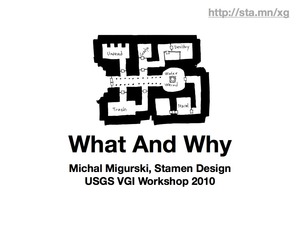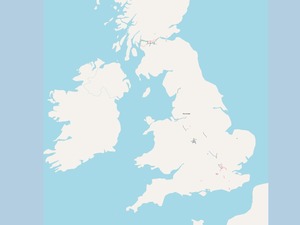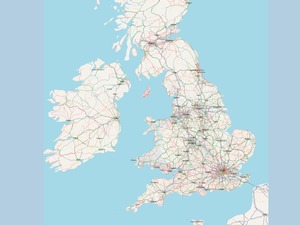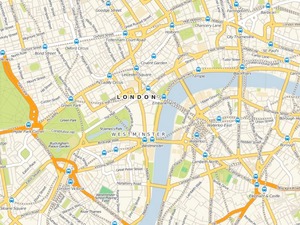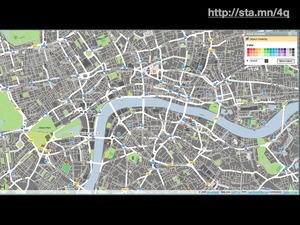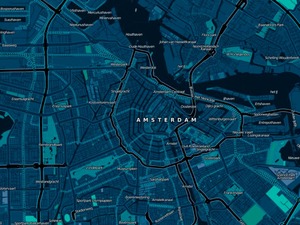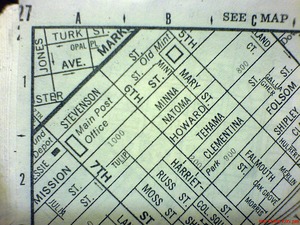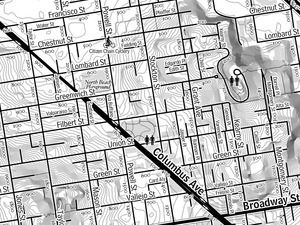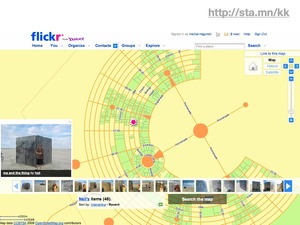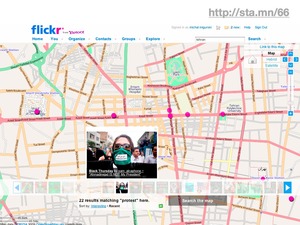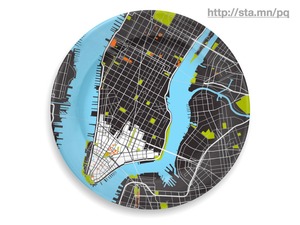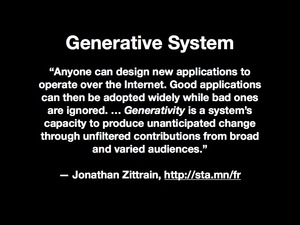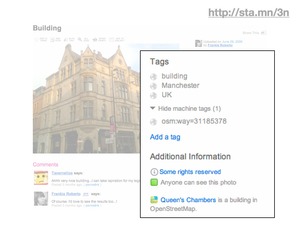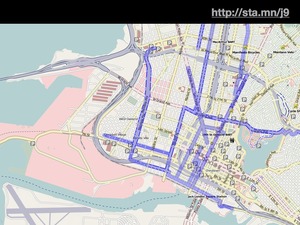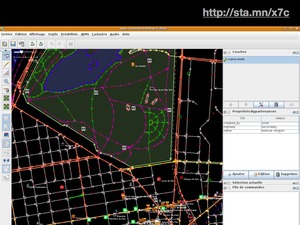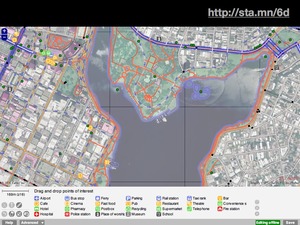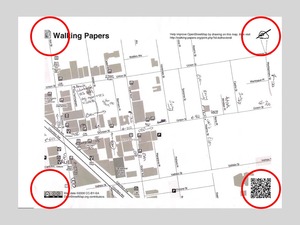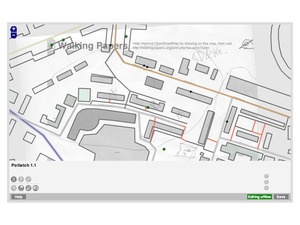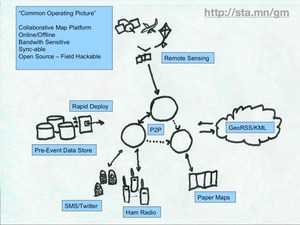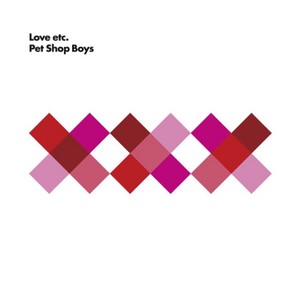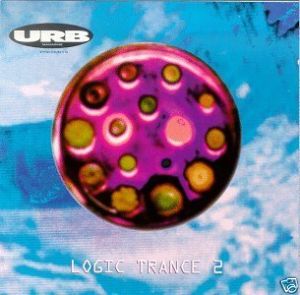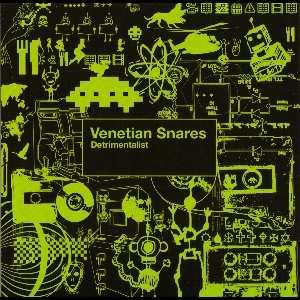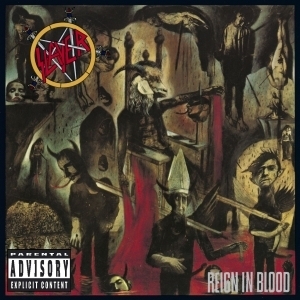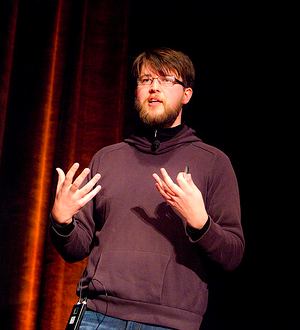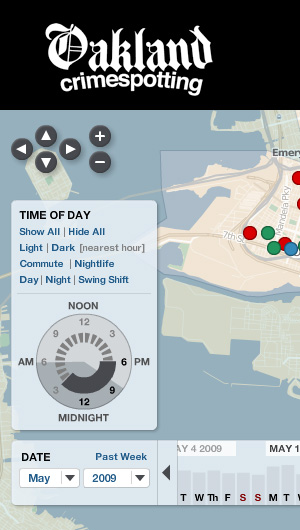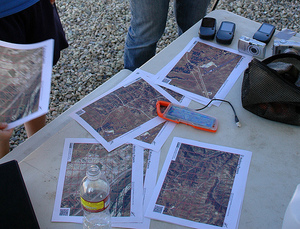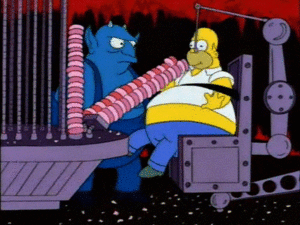tecznotes
Michal Migurski's notebook, listening post, and soapbox. Subscribe to ![]() this blog.
Check out the rest of my site as well.
this blog.
Check out the rest of my site as well.
Jan 18, 2010 8:33am
last week: new york
I had kind of a bonkers trip to New York this past week. My proximate reason for being there was an invitation to Microsoft Research's annual Social Computing Symposium (SCS), an invitational held this year at NYU's ITP program. Another reason was to visit the U.S. Geological Survey's Volunteered Geographic Information workshop. A third was to pay visits to a bunch of east coast superheroes. The thing I love most about these whirlwind adventures is that you have an excuse to compress a full schedule of visiting into a very short span of time. I had a chance to meet and reconnect with a few people I like and respect quite a bit. I felt warmly embraced.
The SCS theme this year was "City As Platform", and the structure of the event was brief talks punctuated by puppet shows. About half the people gave presentations, though I wasn't one of them because I was thinking more about the USGS thing for later in the week (more on that below). Steven Johnson gave an opening talk that made me think I had accidentally bumbled into a TED or Davos, though the situation did rapidly improve.
Kevin Slavin gave my favorite kind of talk, a barnstormer that I found simultaneously fascinating and provided a lot of hooks for debate. Liz Goodman took better notes than I, and the basic gist was like this:
- Concealment technologies, like the radar-defeating B2 Bomber, work by breaking up a shape rather than hiding it entirely.
- High frequency, algorithmic trades work the same way, tearing larger financial movements down into microscopic dust.
- This modern computerized finance stands in contrast to people-driven, proximity-reliant trading off the past that gave rise to today's financial district.
- Physical proximity required for algorithmic trading is no longer a result of human distance but of microsecond ping times necessary to exploit fast, small differences in price.
- Why can't the whole thing just float off and go away if it doesn't need people anymore?
Kevin connected to the city theme with 60 Hudson as a pivot. It's a massive telecommunications node, and physical distances along the network from this building translate to communication delays, which subsequently translate to money lost or money gained. We used to think about time in terms of distance ("The furlong was the distance a team of oxen could plough without resting"), which we've mostly forgotten since communications speeds got so fast, but the high rents directly around this building show that on some scales, velocity of communication can still be measured.
Now I don't quite agree with Kevin's conclusion. Where he sees an inhuman system that's begging to be pushed off into space where it will cease to bother its once creators, I'm looking at a natural consequence of technological speed in the service of technology. Someone's always going to want to exploit the seams with science. What we need is not to set the thing adrift off-world but to tame it with a new Glass-Steagal. Still, the core humanism of where he goes with this is touching, beautiful and deserving of some attention. Most "city as platform" talk comes in two varieties: information technology and space syntax. There was plenty of both on offer at ITP, lightly brushing the testicular, amoral war-metaphoring that views urban fabric and shared space as just scenery to play out control scenarios. I don't want to call out anything in particular, so I'll just link to an unfortunate recent BLDGBLOG post about Die Hard and the IDF walking through walls after reading Deleuze and Guattari. One of the commenters, Jim Meredith, has this response:
"However, as you note early in you piece by quoting those who maintain, live in, and trust the concept of private space, the Nakatomi/Nablus/DieHard concept is, in fact, a shocking and gross violation of a core concept of civil society."
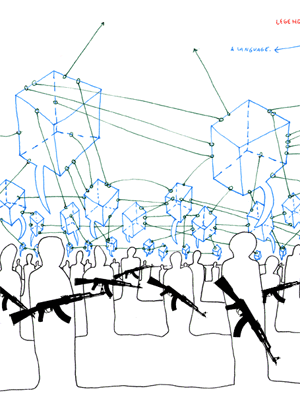
(apologies to Marc Ngui)
Not everyone views the city as a battle suit or a maze of twisty passages all alike, and it's worth thinking about provided functions (sewage, macadamizing) in terms of what they do, who they do it for, and for what price. Anil Dash in particular described his Expert Labs concept, a project to consider and modify the motivations for geek work and the federal government. Did you know that you can't, technically, "give" things to the U.S. government? It's true and Anil's trying to change that. Which is an interesting segue to the USGS event in DC, a workshop intended to explore successful volunteer geographic data programs (like OpenStreetMap) to see how that can be applied to the forthcoming update to the National Map.
Thanks to a door malfunction on my NYC/DC flight, I arrived late to the party and unwittingly delivered a closing keynote. The full content of the talk and my slides immediately follow these other exciting things that happened:
- I visited the New York Public Library map people twice and was allowed to flip through a 17th century Dutch naval atlas.
- I got to meet the amazing New York Times graphics department, including Matt Ericson, Matthew Bloch, Amanda Cox, Shan Carter, and others. These are the people turning our ideas about interaction and mapping online utterly upside-down.
- Grand Central Oyster Bar.
- Veselka for 2:00am pierogi.
- Mark Hansen's genius installation at the NYT lobby.
- Poking my head into the Saturday Night Live studio during filming of Laser Cats.
- Played the new(ish) Mario Brothers Wii game and discovered that my muscle memory of the old game's standard controls has remained fully intact for 20 years despite no external reinforcement.
Now, my slides for the USGS thing.
Readiness.
For many years, OpenStreetMap was understood to be a project about the future, meant for productive use someday but clearly unready. Potential users still had to be convinced, and we passed over OSM as a data source for projects in favor of commercial data on a number of occasions. This phase lasted from 2004 to about 2008 for us at Stamen.
In 2008, it started to look more done than not-done.
The social structure and set of motivations that OSM thrives under can be seen as part of the broader trend towards shared development practices and better communication enabled by the open internet. We're seeing a trend toward a larger number of smaller operations unified by an ethos of participation and local scale, something that Brian Marick has jokingly summarized as "artisinal retro-futurism" and "team-scale anarcho-syndicalism". I love this description.
In our work, we're generally on the receiving end of map data, and I've got some examples showing cartography I particularly enjoy that's benefited from OSM as a resource.
Stamen's "Fresh" map style for Cloudmade, showing legible web cartography for inner London, was immediately applicable to the rest of the world upon launch. It's used by OffMaps, Noticings, and others as a default, web-native basic road map without some of the distracting recognizeability of Google Maps.
UK designer Matt Jones of BERG used Cloudmade's style editor product to apply Kevin Lynch's ideas about the city as a network of paths, edges, districts, nodes, and landmarks for heavy traveler social network Dopplr. Particular ideas about the role of information on the map can be rapidly experimented with and published to a broad audience.
Stamen also did the Cloudmade Midnight Commander map style, answering a creative brief suggesting a design appropriate to Jason Bourne's in-car GPS. Again, something that starts as a small idea or even a joke can very quickly go into full production when simple, well-understood data is available.
I've also been exploring the adaptation of paper maps like this 1996 Rand McNally SF street atlas popular among bike messengers. The result has been OSM-derived, print-ready cartography that additionally incorporates civic parcel and contour data.
Finally, Yahoo photo-sharing web service Flickr has used specific portions of OpenStreetMap data in places where Yahoo Maps has poor or non-existent coverage. The transient desert city of Burning Man is one such example, surveyed and laid-out fresh each year. OSM Foundation board member Mikel Maron contributes his mapping expertise to the Burning Man Earth project to provide visual context for the thousands of photogrpahs that come from the art festival each year.
When anti-government protests broke out in Iran last year, Flickr was able to rapidly pull in high-quality maps of Tehran to provide immediate geographic context to the sudden flood of news and imagery. I'm told that high quality road data for cities like Tehran is traditionally quite hard to come by via normal channels, since there's very little road navigation market for western companies there.
Services such as Google's and the iPhone are bringing more different kinds of people in close contact with cartographic design through their daily lives than ever before. We know that use and familiarity breeds discerning taste, and cartography has become popular, decorative, desirable, and functional.
What specific technical characteristics of OpenStreeMap motivate the creation of this broadly useful data set? I think that a few critical decisions made in the early days of the project have endowed it with generative properties, the "capacity to produce unanticipated change through unfiltered contributions from broad and varied audiences" as Jonathan Zittrain has said.
Three specific features of OpenStreetMap have this effect.
First, each object in the system has a unique and durable identifier. Objects basically stay put, and are composed of very simple primitives. There are no curvy lines in OSM. The identity of each object in the OpenStreetMap database is exposed to the outside world, so that Flickr can let you refer to specific OSM features in your photography. Here we have a photograph of the Queen's Chambers in Manchester that's explicitly connected to the building footprint in OSM because the two entities can be tagged together. The system is useful even when not explicitly mapped.
Second, the tagging structure is free-form. You can apply your own arbitrary descriptions to features, generally conforming to the basic expectations of the community with tags like "highway", but often departing from them entirely. Andy Allan created a rendering for his OpenCycleMap project that specifically called out features with tags relevant to bicyclists, like these portions of the bike network in Oakland. New tag conventions are decided through use rather than committee. Most theoretical arguments about the appropriateness of one approach over another are moot until actual use by a number of people over time can be shown.
Finally, there is an open API. OSM's core feature is a complete, well-understood way to move data into and out of the service. This has made it possible to create numerous ways of recording and editing OSM data. JOSM is the editor for the precise, obsessive, and German. Potlatch is the web-based editor that lives under the default "edit" tab on the site, and includes simple tools for pulling different kinds of points of interest into the aerial map.
Walking Papers is my own research project, and provides a way for paper data collection to help OSM. Each of these applications takes advantage of OSM's well-documented and simple protocol to moved information through the system, with varying amounts of complexity available to different user populations.
I want to close with this napkin sketch by Mikel Maron. Many years ago, Mikel showed a possible "common operating procedure" around the project, incorporating numerous technologies not normally associated with desktop geography. Much of the methodology drawn here did not yet exist at the time, but Mikel could be sure that with healthy usage patterns it would be possible to draw double heads on each of the arrows with some reasonable expectation of future possibility.
Jan 3, 2010 10:23am
blog all oft-played tracks
These are a few of the tracks I added to iTunes in 2009 and listened to the most. Not all of the music is new, but it's all got a date-added between 2009-01-01 and 2009-12-31 and a fairly high number of plays, so that's good enough for me. This post would be a one-line perl script if I used last.fm.
(Here are the MP3s below as an .m3u playlist)
1. Pet Shop Boys: Love Etc.
Shawn makes no apologies for hating the Pet Shop Boys, but this is the new track I listened to the most this year, so there you go. They've been a favorite band of mine for about ten years, mostly because I like pop music and I like their lyrics. This track is also a stand-in for Lady GaGa's Poker Face which I don't actually own, but find completely fascinating. Pop music!
2. Zomby: Where Were U In 92?
This track is an amazing signpost to the hardcore rave music of the early 1990's, but it's entirely modern and produced by someone too young to have had firsthand experience of that scene. I found it via k-punk, who has this to say:
That's why, whatever its intentions, whatever its official status as a side-project, Zomby's Where Were U In 92 amounts to a refreshingly honest libidinal confession, an admission that British dance music is still haunted by the hardcore continuum. Think about why it's impossible to have imagined a Jungle producer in 92 do Where Were U in 76: it isn't only that 92 had so broken with the whole frame of reference of sixteen years before, it's that the headlong rush into the future precluded such retrospection.
3. Moderat: A New Error
This is one of those tracks that Shawn brings to the office that makes me have to put down whatever it is I'm doing for about ten minutes. The bass here, heard over a good pair of speakers, is deep like the best of Sleeparchive.
4. Laurent Garnier: Wake Up
I include this because it's part of the two-disc Logic Trance 2 compilation, something from 1994 that I finally reacquired this year. Most of the collection is loaded with floating, detached trance music that hadn't in all cases found a dancefloor yet. It's all deeply nostalgic for me, found through my roommate Paul who helped form a lot of my musical tastes as I was hitting escape velocity from industrial music. The whole compilation is a classic, this track from Laurent Garnier is a taste.
5. Depeche Mode: Wrong
The video for Wrong is like a terrifying bad dream. The song is some of the darkest anything I've heard come out of Depeche Mode, incredibly abrasive and confrontational.
6. Venetian Snares: Sajtban
I saw Venetian Snares play perform in Oakland with Otto Von Schirach, and loved the performance. Again, abrasive and confrontational, but also fast and squiggly.
7. Slayer: Angel Of Death
Another one of those memories dredged up from my youth, this one from Brian, the slightly white-trashy headbanger dude who lived up the street from me in San Jose when I was 14. Other bands I got from Brian include Obituary, Death, Godflesh, and Entombed. He also owned all the Iron Maiden EPs that were just Nicko McBrain funny-talking apropos of nothing. I've started pulling out some of this old metal lately, fixating on some of the more experimental or weird bits that fit cleanly with my later electronic tastes. Angel Of Death pretty much just rocks the fuck out.
8. Sam Cooke: Chain Gang
On a completely different trajectory, Sam Cooke is amazing. The ooh-hah beat of Chain Gang is astonishing.
9. Birdy Nam Nam: The Parachute Ending
I don't recall where I found the video for this, but it's a lovely piece of very French-seeming animation that instantly reminded me of Spartakus and the Sun Beneath the Sea. It didn't even register that the "Birdy Nam Nam" in the video title was the name of a band or that this was a music video, and I wondered why the music wasn't included in the credits. Dur. Excellent techno track though.
10. Blaqstarr: Hustress (snippet) feat. Rye-Rye
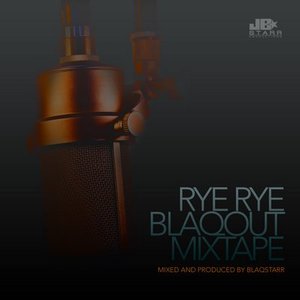
I'm not sure why this is here. I got interested in Blaqstarr tangentially through bingeing on The Wire for a few months, and this short slice of omnious hip-hop sound collage is incredibly interesting.
Jan 3, 2010 7:25am
here comes 2010
The odometer has clicked over, we're in a new decade. I'm trying to make a bit of sense of the previous year, so it's helpful to start by looking over a full year of blog posts like last time I did this.
These are some things that happened.
Soda
Our dog, Sodapop, died in August. The house feels much emptier, especially when I'm making pasta and expecting her to demand her perquisite of three to four noodles and a bit of bacon.
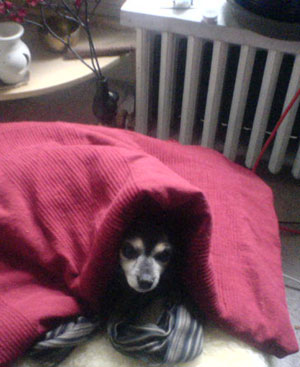
Blogging Fewer Dog-Eared Pages
A few years ago, I got into the habit of writing down the best stuff from the nonfiction books I read, and posting it all here as entries titled Blog All Dog-Eared Pages. A few friends like Chris and Russell and George have picked up on this, which made me very happy. Problem is I'm bad at habits, so my last such entry was all the way back in January, when I excerpted whole slices of the remarkable Process Of Government by Arthur F. Bentley.
I purchased a Kindle in late spring, and I think this has much to do with how this activity has petered out for me. Specifically, the Kindle and its good friend Instapaper have largely eaten my nonfiction reading, which means that there are no longer any pages to dog-ear. The counterintuitive part is that Kindle actually has an incredibly easy way to mark and save passages, with everything you highlight using the little joystick being dumped to a plaintext file called "My Clippings". In theory this should make the activity much easier, but since the medium is the message and all that blah, I'm now reading entirely different stuff than I used to. I read fewer non-fiction books and more non-fiction long-form online writings, the kind of stuff that fits into Instapaper. I'm not unhappy with this change in my intake, but I do like to be a little more demonstrative with the things I'm interested in, so I'm unhappy the change in my output. If there was a way to make the Kindle pump the clippings file back out on some schedule, that would be good. Having to plug it into a computer does not cut it.
I tried to do a "blog all clipped passages" once about film projection speed, but I don't yet have the hang of this.
Speaking
I spoke in front of large groups of people much, much more this year, mostly about maps and cartography. This has been incredibly fun.
(Photo by Kris Krug)
In March, Andrew Turner invited myself, David Heyman from Axis Maps and Elizabeth Windram (formerly) from Google Maps to a SXSW panel on Neocartography: all the new stuff happening in maps online. I talked a bunch about Stamen's work of course, and it was great fun to attend my first SXSW after hearing so much about over the years since 2003 or so. I'll be back this year, for Chris Heathcote's Maps, Books, Spimes, Paper panel. Excitement.
Shawn and I did two presentations of a workshop we're calling Maps From Scratch, once at ETech 2009 and again to a shockingly-packed room at Where 2.0. It must have gone pretty well, because Brady has invited us back to do it all over again in an expanded, two-session form. This was an interesting workshop to run, because we opted for a heavy hands-on approach with a genre of server-side GIS software not known for its ease of installation. We created an Amazon EC2 AMI for participants to use as a workstation, and it went pretty well - that's all still available at mapsfromscratch.com.
My solo presentation at Where 2.0 was Flea Market Mapping, building on some of the work I've been doing georectifying historical maps and explaining why that's a fun and easy and useful activity. I expect to do more work in that are this upcoming year, if all goes well.
I also went to Amsterdam in July for State Of The Map, where I described my work on Walking Papers (more on that below). This was great fun. Aside from the excitement of biking around Amsterdam for four days with Aaron and being hosted by A'dam expert traveler Ben Cerveny, the conference itself was my first mass exposure to the rabid OpenStreetMap community. My talk started out on mapping on paper generally before shifting to the Walking Papers project specifically.
Amsterdam made me switch bicycles, from mostly riding my Univega fixed-gear to a more relaxed single-speed with wide handlebars and an early 1980's Trek mountain bike frame. I'm very happy with it, can't find a photo though.
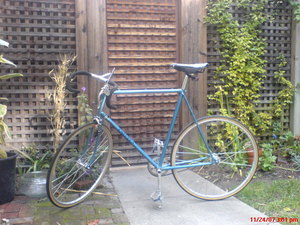
In October, the North American Cartographic Information Society invited me to deliver the keynote at their annual meeting, which was an incredible thrill and honor. I've not done this kind of central focus talk before, so I thought I'd use the opportunity to talk about online community and sharing to an audience of academic and professional cartographers, explaining some of the trends that have led to a strong and vibrant OpenStreetMap project. Slides and notes here.
Other events where I waved my hands in front of crowds included Interesting 2009, Web 2.0 Expo, dConstruct 2009 in Brighton, and a variety of visits to Stanford and UC Berkeley. All of it was by turns gut-wrenching and awesome.
Finally, in December Eric Meyer and Jeffrey Zeldman asked me to participate in An Event Apart here in San Francisco. The audience was much more of a mainstream web design crowd, and I was surprisingly engrossed by the other presenters, especially Luke Wroblewski's talk on HTML forms and Jared Spool's always-entertaining stories from his work for Amazon.com. I posted my slides as a giant, 28MB PDF file.
Being A Fan
I decided early this year that it was important and healthy to be more of a fan, so I've made a special effort to point out things that are awesome and worthy of attention. Early in the year, that meant moving pictures of the sky. More recently, that meant moving pictures of hands and drawings. Along the way, that's meant everyone I know who is doing awesome shit, with all the design and technology and music and video work that my friends have produced. Awesome awesome awesome.
Oakland Crimespotting
We added a PIE OF TIME to long-time research project Oakland Crimespotting, have you seen it?
And, we launched San Francisco Crimespotting with the enthusiastic participation of Jay and Kelly and the City of SF's technology department and some dude named Gavin. Shawn's responsible for the port from Oakland and keeping it running.
O'Reilly published my write-up of the project's technical and social structure in Beautiful Data, a new entry in their Beautiful series.
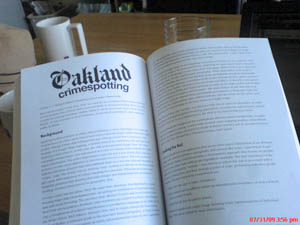
Walking Papers
Aaron linked to a computer-vision algorithm called SIFT way back in February or so, which caused bells to go off in my head. The result is Walking Papers, a project that connects paper-based mapping and annotation with the crowdsourced OpenStreetMap project through the medium of printing and scanning.
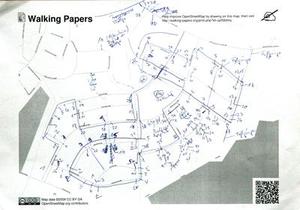
It started as a joke and a feasibility test, but I quickly saw that using technologies like SIFT and FPDF and QR Codes was totally going to work, so a few initial tests searching for pictures of gargoyles on scanned pieces of paper turned into a proper website and service actually used by people around the world. We've even gotten a few international volunteers to translate the site to German, Dutch, French, Spanish, Japanese, and Italian! Thanks Jonas, Milo, Jonathan, Manuel, Hiroshi, and Emanuel!
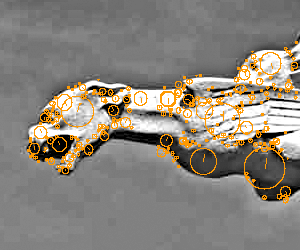
Walking Papers opened some incredibly interesting doors to the international disaster response community, after Mikel suggested I attend a week-long hack session at Camp Roberts. Turns out, the use of such intermittently-connected technologies as paper and local networks is a super hot topic in these circles, and Walking Papers was one of a numbr of projects that's pushing some serious buttons at the DOD right now, for the kinds of people who need to make networking stuff work with a tent and a car battery and a USB key.
Break
At some point, I basically became overwhelmed with novelty, and decided to realign some priorities in favor of doing and showing instead of talking and stuff.
Fortunately, the holiday break has been a relatively easy one to curl up in, with a trip up to Washington to see some of Gem's family and a few old friends, followed by a week or so of being a total hermit here in Oakland. We spent New Years at the Chawazek house drinking champagne and eating dessert and talking about obsolete systems of measurement. I thought back to all the New Years Eves I've had over the years from the time I was making my own plans to just the other night. I feel like I've come somewhat full circle, with a few scattered trips to Poland and a whole string of raves thrown in the middle:
- 1993: Home in San Jose, probably with grandparents in town.
- 1994: Party. A friend's small house party in South San Jose. Sadly we didn't keep in touch after high school.
- 1995: Home. I was supposed to go out with friends, but my ride flaked and I didn't have a car so I just spent the evening angry and at home. This was my last New Years Eve as a high school kid.
- 1996: Party. My freshman year at UC Berkeley, I spent the winter break back in San Jose catching up with high school friends. This was fun, everyone was talking about where they ended up for college.
- 1997: Poland. I visited my mom for a few weeks, spent most of my time stressing about grades that turned out to be fine (A- in CS61A), and went to a small house porty for NYE. People there take their New Years Eve much more seriously, and dress nicely for the occasion. This was weird.
- 1998: Rave. Cloudfactory NYE at a rock climbing gym in Salinas.
- 1999: Rave. Cloudfactory NYE at a former planetarium dome storage building on the former Fort Ord near Monterey. Terry and I did live visuals, and the party was shut down at about 5:00am when the building's superintendent finally got antsy about the noise and the drugs.
- 2000: Rave. Cloudfactory NYE at that same Fort Ord building, but this time it went all night. A curtailed party seems to be more fun than a complete one, possibly because the element of randomness that a bust or sudden cancellation introduces?
- 2001: Rave. Cloudfactory + Infinite Beat at a warehouse in Millbrae near SFO. This was one of the last times I did live visuals at an event, but we pulled out all the stops with seven overlapping screens. I spent much of the night unhappy because I had recently had a crappy breakup and she was there, with the lighting guys in the other main party room.
- 2002: Poland. In a cabin in Zakopane with cousins on my dad's side. Vodka in little tiny shot glasses.
- 2003: Raves. Basically wasted this evening running around between a few different parties.
- 2004: Rave. Gem and I were living at Otherworld, so the big party was just outside our bedroom.
- 2005: Rave. Otherworld again, but this time we had our own apartment, where we escaped in the morning to spend the next day contentedly watching old episodes of Kids In The Hall.
- 2006: Poland. My grandfather passed away, I went there for the funeral and to Krakow with some back-in-the-day family friends for New Years.
- 2007: Friends. Up at Darren and Bonnie's for poker and drinking. This was my winter of terrifying back pain, but the injury stayed mostly quiet to allow me a nice evening out.
- 2008: Friends. Rented vacation house in Sonoma, near Charles Schultz Airport, stuffing ourselves with Aaron's cassoulet for four days. Contentment.
- 2009: Friends. Homemade pizza and board games in the Mission. Contentment.
- 2010: Friends. Goodtime fooddrinkery up near Buena Vista Park, including an extended conversation about old time weights and measures, e.g. the furlong and the dry vs. wet gallon. The presence of an iphone puts a new twist on this kind of talk. Contentment.
Resolutions
- Health.
- Mindfulness.
- More fandom.
- Preparedness.
- Small pieces, quickly published.
